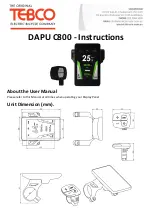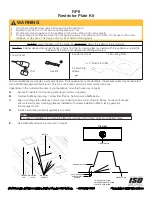
Preparing for use
R&S
®
NRP Series
12
Getting Started 1419.0170.02 ─ 18
– Residential environments
– Environments that are directly connected to a low-voltage supply network
that supplies residential buildings
●
Class
A equipment is intended for use in industrial environments. It can cause
radio disturbances in residential environments due to possible conducted and
radiated disturbances. It is therefore not suitable for class B environments.
If class
A equipment causes radio disturbances, take appropriate measures to
eliminate them.
3.3
Considerations for test setup
Give particular attention to the following aspects when handling power sensors.
Handling the R&S NRP18S
‑
xx power sensor
►
CAUTION!
Hot surfaces. Under certain conditions, the maximum surface tem-
peratures of the power sensor can exceed the limits defined in the
EN
61010-1 standard, safety requirements for electrical equipment for mea-
surement, control and laboratory use.
Provide protection as follows:
a) Ensure that unintentional contact with the power sensor is impossible.
b) Wear heat-protective gloves when touching the power sensor after opera-
tion.
Handling the TVAC
‑
compliant power sensor
1.
NOTICE!
Avoid contamination.
Always wear clean protective gloves when handling the TVAC
‑
compliant
power sensor to protect the power sensor and its environment from contami-
nation.
2.
NOTICE!
Reduce outgassing to a minimum by following this bake-out proce-
dure.
Vacuum bake the TVAC
‑
compliant power sensor for 100 hours at 85
°C at a
pressure lower than 10
-5
mbar.
EMI impact on measurement results
Electromagnetic interference (EMI) can affect the measurement results.
Considerations for test setup













































